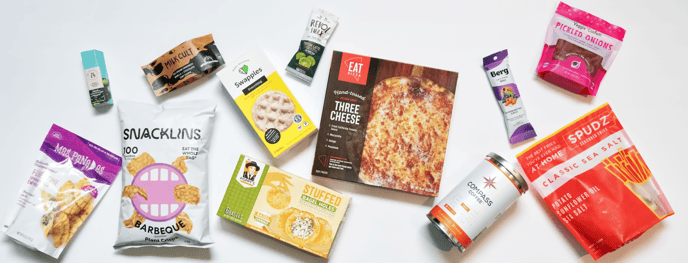In this article, we will explain the trend of health and wellness, why it is happening, and elaborate on what this could mean for your brand.

Since the start of 2021, many CPG trends have taken flight like the focus on sustainability, the rise in ultra urban farming, and the growth of bubbling drinks. However, one trend has ascended to the top: health and wellness.
In this article, we will explain the trend of health and wellness, why it is happening, and elaborate on what this could mean for your brand.
What is the Trend?
Health and wellness products not only provide individuals with numerous benefits, they also present plentiful market opportunities for budding food entrepreneurs. Since 2017, the wellness industry has expanded by 6.4%, starting with an estimated value of $3.7 trillion to a value of $4.2 trillion. This growth has been twice as fast as the growth of the global economy!
Within the entire wellness and health space, the CPG industry is taking advantage of this wave and growing at a staggering rate, bringing in an estimated $250 to $500 billion worldwide and around $160 billion in the United States. What is interesting about the wellness and health trend is that the products being launched are taking on a new persona. The term health and wellness no longer encapsulates vitamins, minerals, supplements, and other medicinal ways of living a more healthy lifestyle. Instead, brands are finding innovative ways for consumers to receive health benefits without disrupting their current routine.
For example, 150 million people in the United States drink coffee every single day. These individuals, especially those who are Millennials and Gen-Z, care about their health and wellness, but are not willing to compromise their daily coffee ritual. What appeals to this growing population is adding health benefits to the coffee itself. By adding, say, a scoop of collagen powder, individuals can enjoy their daily dose of caffeine while also improving their skin, digestion, and joint health. Notable coffee brands engaging in this tactic include Super Coffee who add protein powder to their cup of joe and Bulletproof who mix in healthy fats and other compounds to boost energy and help with weight loss.
Why is this Trend Happening?
The expansion of the health and wellness industry is largely due to Generation Z (Gen Z). Gen Z, or the individuals born between the late 1990s and early 2010s, takes a holistic view of health, emphasizing physical fitness, healthy eating, and mental well-being. This group of individuals is currently the largest generation in America, comprising 40% of all U.S. consumers. More importantly, Gen Z is estimated to wield $143 billion in spending power while influencing another $300 billion in indirect spending in the U.S. alone.
The pandemic has also been a facilitator of the health and wellness industry. In fact, 77% of consumers say they want to do more to stay healthy in the future. Now more than ever, consumers are more interested in the connection between gut health and immunity; focusing on metabolic health’s impact on weight management; eating to improve mental health; interested in personalized nutrition; and planning to spend more money on health and wellness related items, according to FoodDive.
What does this Trend mean for Emerging Brands?
By keeping consumers’ needs in mind, many CPG brands have been experimenting with self-care strategies like adding beneficial ingredients or eliminating unhealthy ingredients from their existing products. Companies should follow CPG trends, like health and wellness, because they can improve sales by meeting the demands of consumers. It is important to include clear callouts on your company’s packaging materials to highlight your products’ health benefits to eager consumers.
For example, Snacklins started out as a vegan pork rind company and marketed themselves as such. When they launched to market, they quickly realized that people were primarily buying their product because it was only 80 calories for the entire bag. Once Snacklins realized this discovery, they changed their packaging to highlight the calorie count and encouraged customers to eat the entire bag guilt-free.
By building into a growing market, companies will have plenty of opportunities for more profits and a larger exit.
Union Kitchen Accelerator Brands in this Space
Revol Snax was born when its two co-founders, Nadine Calderon and Dave Birsen, noticed a lack of keto-friendly yet indulgent snacks on the market. The two co-founders, both former athletes, care deeply for their health and understand the connection between food and energy outputs. However, like most people, they enjoy treating themselves with a sweet treat.
With all of this in mind, Nadine and Dave launched a series of keto-friendly cookie bites with flavors like Snickerdoodle, Dark Chocolate and Almond, Double Dark Chocolate, and Matcha Latte. Although these treats sound unhealthy, Revol Snax’s Cookie Bites have no added sugar and no unknown ingredients. Beyond this, all of their products are paleo, keto, and vegan to further promote their prioritization of healthy living.
Revol Snax is largely successful because they created a product that heavily appealed to individuals who prioritize their health and wellness. They created a product that allowed people to treat themselves without compromising their commitment to living a nutritious lifestyle.
Why Trends Matter
By understanding the growing trends in the market, brands can leverage and advertise their products accordingly to maximize success. To learn more about CPG trends happening now, visit Union Kitchen’s Blog to learn more!
